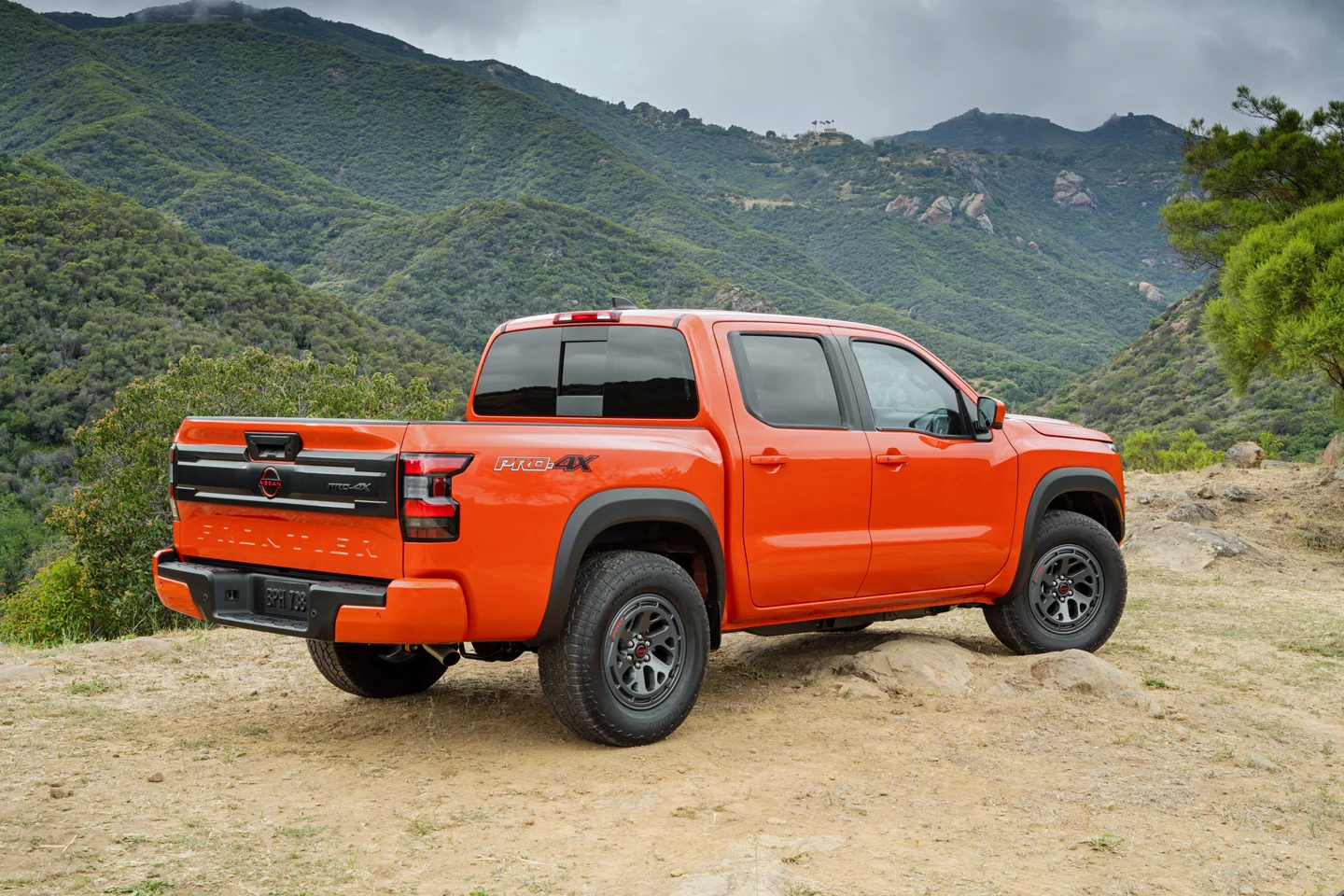The pickup truck market has evolved into one of the most dynamic and fiercely competitive segments in the automotive world. Once regarded merely as utilitarian workhorses, pickups today serve a vast array of roles — from rugged off-road companions and family haulers to luxury status symbols and weekend adventurers.
This diversification has given rise to an intriguing phenomenon in the resale market: certain pickups retain their value exceptionally well, often selling for prices close to or even above their original Manufacturer’s Suggested Retail Price (MSRP) when used.
Conversely, other pickups, despite being mechanically sound and functional, struggle to maintain value, often selling below the widely respected Kelley Blue Book (KBB) estimates. Understanding these value disparities is crucial for buyers, sellers, and enthusiasts who want to make informed decisions about purchasing or selling pickups in the used market.
At the heart of these differences are factors ranging from brand loyalty and design philosophy to technological relevance and market demand. For instance, the Toyota Tacoma, with its reputation for durability and reliability, stands as a shining example of a midsize pickup that defies typical depreciation trends.
Similarly, the Ford F-150 Raptor, with its niche appeal and limited production, commands strong prices even years after the initial sale. These pickups have cultivated devoted followings and deliver on promises of performance, capability, and longevity — attributes that keep resale prices buoyant.
On the flip side, trucks like the Nissan Frontier and earlier Ford Ranger models, despite their practicality, tend to lose value faster than many competitors. Often, this comes down to outdated designs, weaker brand presence, or less appealing feature sets.
In these cases, even solid mechanical reliability isn’t enough to overcome the challenges posed by market perception and changing buyer expectations. This creates a situation where such trucks frequently sell for less than KBB’s suggested retail values, reflecting a tougher market environment.
What makes this topic especially compelling is how it highlights the interplay between consumer psychology and market economics in the automotive sector.
The resale value of a pickup isn’t just about its mechanical soundness or age — it’s about how buyers perceive the vehicle’s desirability, future utility, and overall worth. Factors like design freshness, off-road capability, brand reputation, and even scarcity can have outsized effects on used truck prices.
This article explores this nuanced landscape by examining five pickups that consistently sell near MSRP when used and five that tend to sell below Kelley Blue Book values. Through detailed analysis of each truck’s strengths, weaknesses, and market dynamics, we aim to shed light on why certain pickups retain value better than others.
Whether you are considering buying a used truck as a reliable daily driver, a weekend warrior, or an investment in long-term value, understanding these trends can help you navigate the market more strategically.
By the end, readers will have a clearer picture of the complex forces shaping pickup resale values, helping them avoid costly mistakes and spot opportunities.
In a market where supply chain disruptions, model redesigns, and shifting consumer tastes continually reshape pricing, knowledge is power. So, let’s dig into the pickups that defy depreciation — and those that wrestle with it — to uncover the hidden truths behind the prices on the used lot.
Also Read: 5 Cars With Cool Dash Designs and 5 That Feel 20 Years Old
5 Pickups That Still Sell for MSRP Used
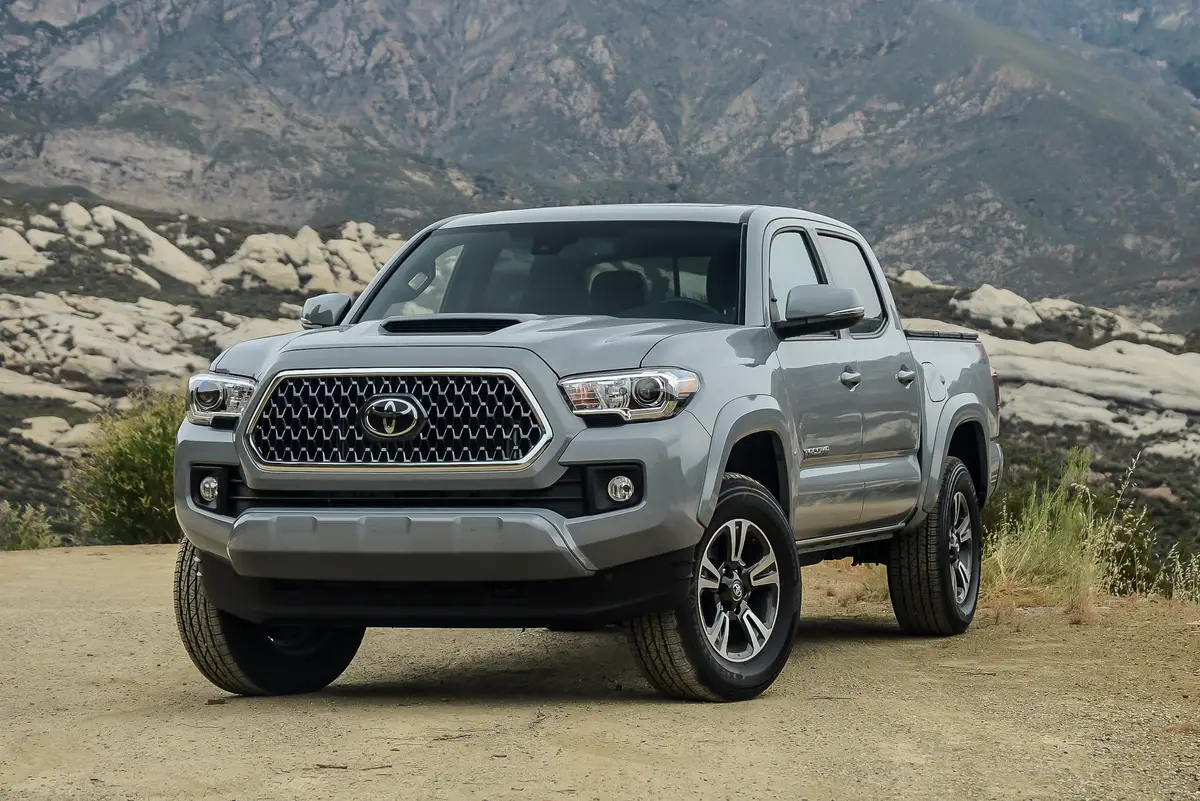
1. Toyota Tacoma
The Toyota Tacoma has earned a nearly mythological reputation in the pickup world for its unshakeable reliability, and that’s no exaggeration. For decades, this midsize truck has maintained a loyal following of owners who trust it implicitly for both daily driving and tough, demanding work.
Its engines — particularly the 3.5L V6 in recent years — are known for going well beyond 200,000 miles with minimal issues, and the truck’s solid frame and suspension components are built to withstand harsh off-road conditions.
This long-term durability translates directly into resale value. When buyers see a used Tacoma on the market, they know it’s not just a used truck — it’s a trustworthy tool that’s got years of life left in it. That belief alone keeps used prices hovering close to MSRP, especially when new inventory is tight.
Another major factor behind the Tacoma’s strong resale is its off-road capability, particularly in specialized trims like the TRD Off-Road and TRD Pro. These variants come equipped with advanced terrain management systems, skid plates, and upgraded suspensions that make them extremely capable in environments where other midsize trucks struggle.
Outdoor enthusiasts and overlanding hobbyists see these trims as turnkey adventure rigs, and that high demand in a niche market drives resale prices even higher. It’s not uncommon to see a lightly used TRD Pro with 30,000 miles listed for nearly the same price it cost new, especially if it includes popular add-ons like all-terrain tires or rooftop tents.
Toyota’s deliberate approach to design evolution also plays a significant role. The Tacoma doesn’t go through wild redesigns or annual overhauls. The result is that a Tacoma from 2020 still feels modern and familiar next to a 2023 model.
The consistency means that used models don’t “feel old,” which helps them avoid the depreciation cliff that hits trucks with fast-changing designs. Buyers who missed out on a new Tacoma can purchase a 2–to 3-year-old model without feeling like they’re settling for outdated tech or aesthetics, making MSRP-like pricing feel justifiable in their minds.
Finally, we have to consider scarcity and brand value. Toyota doesn’t overproduce Tacomas, and combined with occasional supply chain delays, this keeps new inventory limited, especially for desirable trims. When lots go dry, buyers flood the used market, often paying premium prices to get exactly what they want without having to wait for a factory order.
That consumer behavior, built on brand loyalty, mechanical trust, and scarcity, is why the Tacoma consistently defies depreciation expectations and holds firm around its MSRP even after years of use.
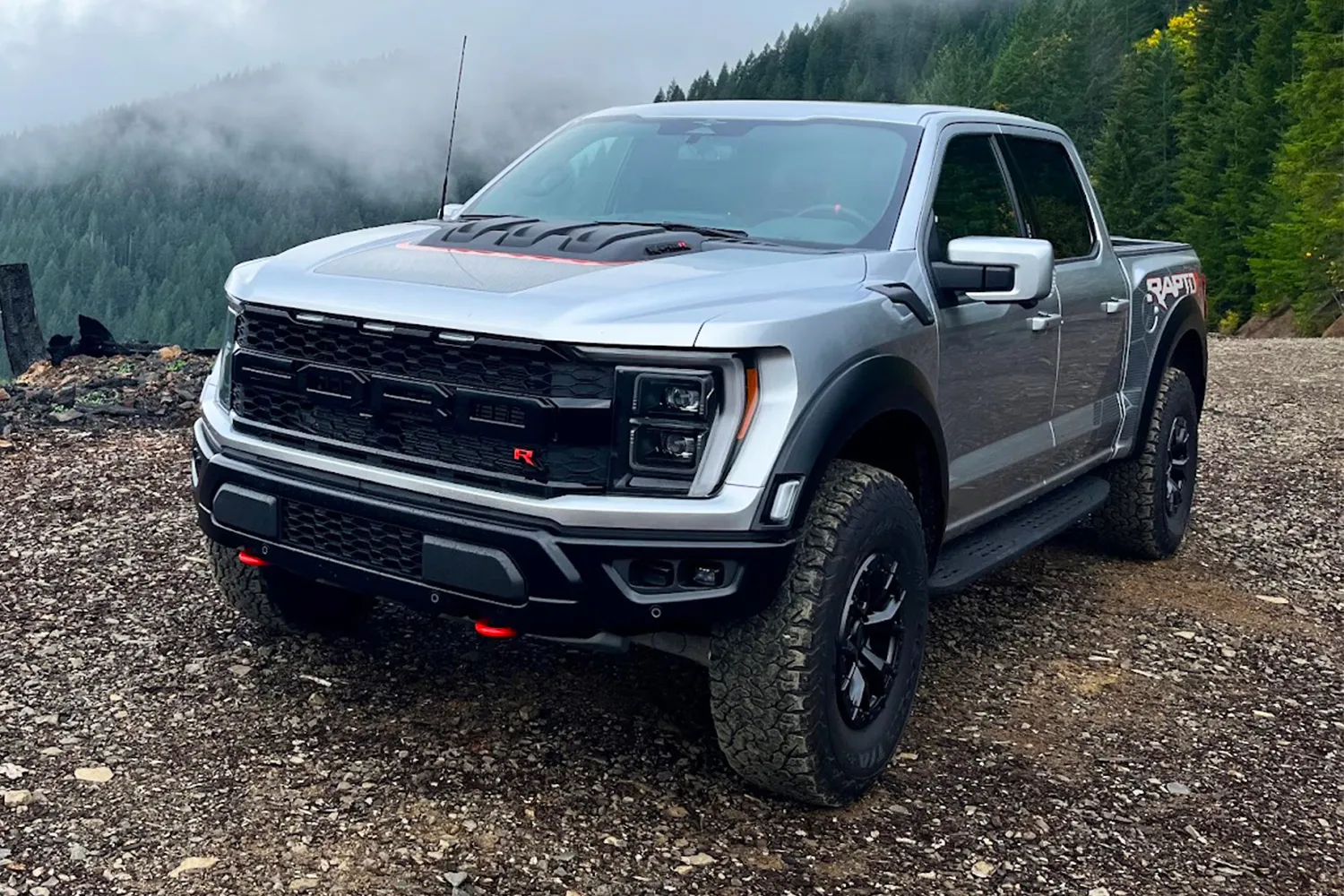
2. Ford F-150 Raptor
The Ford F-150 Raptor is one of the most unique entries in the pickup world, not just because of its off-road capabilities but because of how it blends high-performance engineering with everyday utility.
From the moment it was introduced, the Raptor broke away from the standard truck template, targeting a crowd that wanted something truly different.
With its Baja-style suspension, widened stance, and high-output twin-turbo EcoBoost V6, it doesn’t just look the part — it performs like a beast in off-road environments while still offering a comfortable ride on pavement.
That rare mix of power, design, and brand prestige keeps the Raptor’s value exceptionally high in the used market, often close to its original sticker price.
The limited production volume is another significant reason for the Raptor’s strong resale value. Ford doesn’t mass-produce the Raptor in the same quantities as the standard F-150 trims. As a result, when a Raptor hits the used market, especially a well-maintained one, buyers jump on it.
There’s often a sense of urgency because people know they might not find another good deal soon. This demand keeps prices elevated, and in some cases, depending on condition and mileage, sellers can get very close to what they originally paid for the vehicle. Add in dealer markups on new Raptors, and the used market can sometimes even outpace MSRP.
Another key contributor to the Raptor’s staying power is its devoted enthusiast community. These trucks are often pampered by their owners and meticulously maintained, sometimes even modified with high-end performance parts.
This makes them even more attractive in the used market, where a lightly modified Raptor with premium upgrades might fetch more than a bone-stock one.
Buyers looking for “the ultimate off-road truck” already know they’re entering a premium tier, so they’re less price-sensitive, especially if they’re getting a nearly new vehicle with valuable upgrades. In many cases, those buyers will gladly pay MSRP or more if it means avoiding waitlists or dealer markups on new models.
Lastly, Ford’s ability to maintain a consistent performance identity in the Raptor line has built long-term brand trust. Each generation has improved upon the last without losing the aggressive DNA that made the Raptor a standout.
Unlike some performance vehicles that fade in and out of relevance, the Raptor has kept its niche strong and clear. It’s not just a good truck — it’s a statement, and for buyers seeking a bold, high-performance pickup that turns heads and tackles terrain, the resale price feels well worth it.
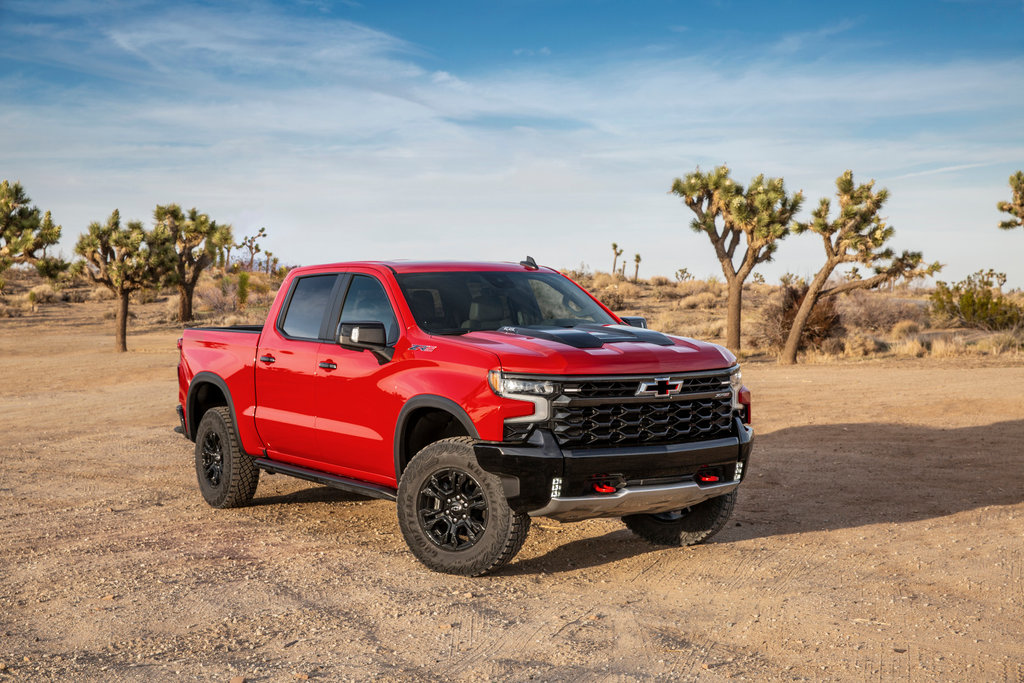
3. Chevrolet Silverado 1500 ZR2
The Silverado 1500 ZR2 is Chevrolet’s boldest entry yet into the full-size off-road arena, and it’s rapidly building a reputation for holding its value at a level comparable to market leaders. Introduced with a unique blend of performance engineering and refined comfort, the ZR2 brings a fresh edge to a nameplate that had traditionally emphasized work over play.
With Multimatic DSSV dampers, electronic locking front and rear differentials, and a factory lift, the ZR2 offers serious trail-readiness right out of the box. These performance credentials make it incredibly attractive in a growing segment where buyers want capability without the need for aftermarket builds, keeping resale prices near MSRP.
The ZR2 also benefits from the relative scarcity of high-end off-road full-size trucks. Ford’s Raptor and Ram’s TRX may lead the pack in pure performance, but they also come with a heftier price tag. The Silverado ZR2 offers a more balanced proposition — aggressive styling, real off-road chops, and a more accessible price point.
This combination has made it a hot commodity in both the new and used markets. With limited dealership allocations and growing demand, many buyers are unable to find a new ZR2 end up willing to pay near-new prices for slightly used models, especially those with popular packages like the Technology or Convenience Package.
Another reason for its strong used market performance is that the ZR2 hasn’t flooded the streets yet. Unlike base Silverado trims, which are ubiquitous, the ZR2 still feels exclusive. That exclusivity translates into better value retention because there’s less competition when a used model goes up for sale.
Owners who list their trucks can command strong prices simply due to the rarity, especially if the truck is in good condition and includes tasteful upgrades like off-road tires or protective accessories. With a growing reputation among off-road forums and positive early reviews, demand for the ZR2 is only increasing.
Chevrolet’s push to improve the overall cabin quality and technology interface in recent Silverados also plays into the ZR2’s appeal. Buyers coming from older models often feel the ZR2 offers a “best of both worlds” experience — off-road ability and a premium cabin.
As Chevy leans harder into this blend of ruggedness and refinement, the ZR2’s value is expected to remain high. For now, it’s already proving that it can stand toe-to-toe with more established off-roaders, and the used market reflects that growing confidence with prices that barely dip below original MSRP.
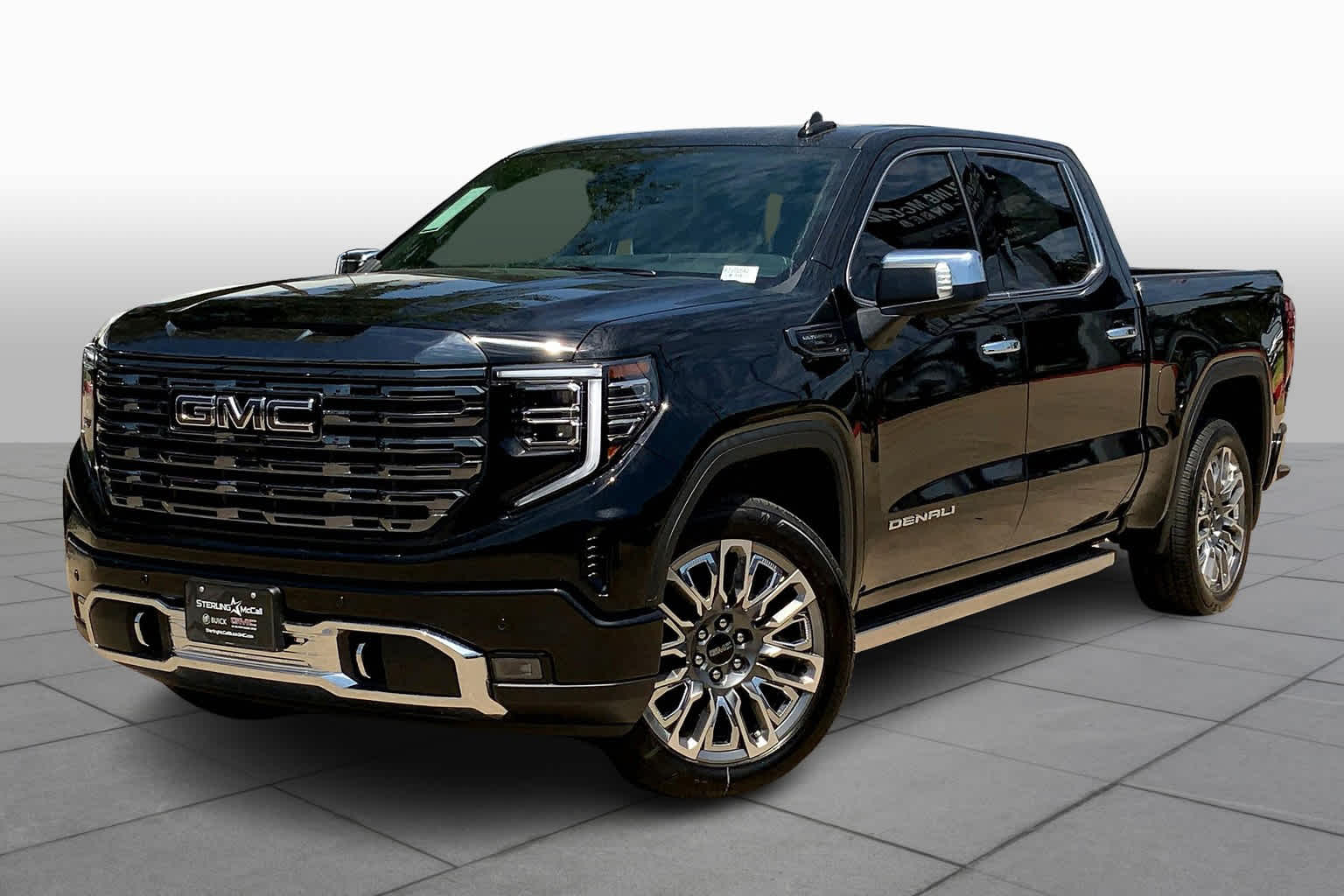
4. GMC Sierra 1500 Denali
The GMC Sierra 1500 Denali has carved out a luxury niche in the pickup segment, offering a unique blend of opulence and utility that few trucks can match.
From its upscale leather seating and real wood trim to advanced driver-assistance features and adaptive ride control, the Denali is more than just a work truck — it’s a status symbol.
That image alone helps it retain a strong resale value, with many used examples selling for only slightly less than MSRP. Buyers looking for a premium truck often turn to used Denalis because they know what they’re getting: comfort, capability, and class.
One major driver of its high resale price is the Denali trim’s brand recognition. Within the GMC lineup, Denali signifies the top-tier — and that branding has been consistent for years. Consumers associate the name with quality and exclusivity, much like how Lexus distinguishes itself within Toyota’s lineup.
This perception allows used Denali owners to ask for — and receive — higher resale prices than lower trims, especially if the vehicle has low mileage and a clean service history. Even minor cosmetic upgrades or optional packages can add thousands of dollars to the resale value.
Additionally, the Denali benefits from a buyer demographic that tends to care for their vehicles meticulously. These aren’t trucks that spend their lives on construction sites or hauling heavy loads. Many Denali owners use their trucks for light commuting and occasional towing, meaning that used models typically have less wear and tear.
For prospective buyers, this adds a layer of confidence — they’re buying a truck that’s likely been treated more like a luxury vehicle than a rugged tool, which justifies a near-MSRP asking price.
Technological consistency also plays a part. GMC updates the Denali’s tech stack gradually, meaning a 2- or 3-year-old model still feels modern. The large infotainment screen, head-up display, and premium audio systems remain competitive with newer trucks, keeping older Denalis relevant and desirable.
This technological stability reassures buyers that they won’t be sacrificing modern conveniences by opting for a used model, further bolstering resale prices. Combined with GMC’s strong warranty support and brand reputation for quality, the Sierra Denali remains one of the few trucks that consistently sells for close to MSRP on the used market, making it a prime example of luxury meeting lasting value.
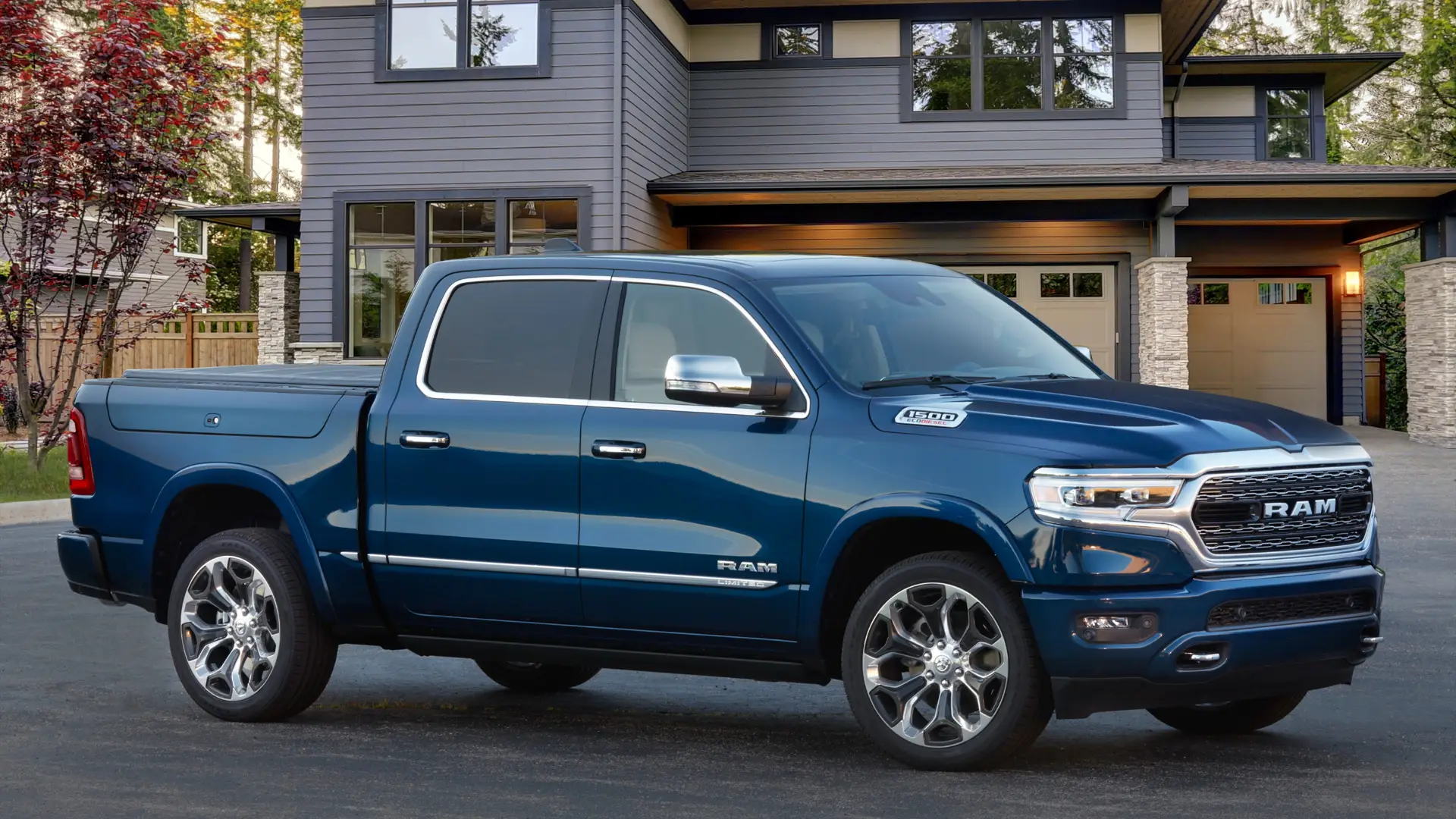
5. Ram 1500 Limited
Ram’s 1500 Limited trim is the epitome of luxury and refinement in the full-size pickup segment, and it’s earned a solid reputation for retaining value in the used market. The Limited combines plush interiors, advanced technology, and smooth ride quality, appealing to a customer base that values comfort just as much as capability.
Buyers seeking a truck that feels more like a luxury SUV than a work vehicle are drawn to the Limited, and this niche demand helps keep resale prices robust. Used Ram 1500 Limiteds often command prices near their original MSRP, especially when they feature desirable options such as air suspension, premium audio, and advanced safety systems.
A big reason behind the Ram 1500 Limited’s strong resale value is its class-leading ride quality, largely due to the available air suspension system that delivers an exceptionally smooth and controlled driving experience. This feature alone differentiates the Ram from many competitors, making the Limited trim especially coveted.
Buyers who have experienced this ride quality are often reluctant to downgrade, driving demand for lightly used examples. Furthermore, Ram’s interior design — featuring premium materials like real wood accents, leather-trimmed seats, and a massive Uconnect touchscreen — elevates the Limited’s status and solidifies its position as a luxury truck.
Additionally, Ram has cultivated a loyal following through its commitment to continuous improvement and customer satisfaction. The 1500 has consistently been recognized for its innovation, including class-exclusive features like the multifunction tailgate and integrated trailer brake controller.
These thoughtful touches add practical value that buyers appreciate even in the used market. This combination of luxury, technology, and functionality means the Ram 1500 Limited holds its appeal and pricing power over time, leading to resale values that hover close to MSRP.
Lastly, the Limited’s relative exclusivity compared to more common Ram 1500 trims helps maintain its value. Not every buyer is looking for a high-end luxury truck, so Limited models tend to command a premium when they come up for sale. Coupled with strong demand from professionals, families, and enthusiasts who want a capable yet comfortable vehicle, this creates a robust used market.
When a Limited with low miles and well-maintained condition hits the market, sellers often see strong interest and pricing close to original MSRP, making it one of the standout pickups for retaining value in the full-size luxury segment.
5 Pickups That Sell Below Kelley Blue Book (KBB)
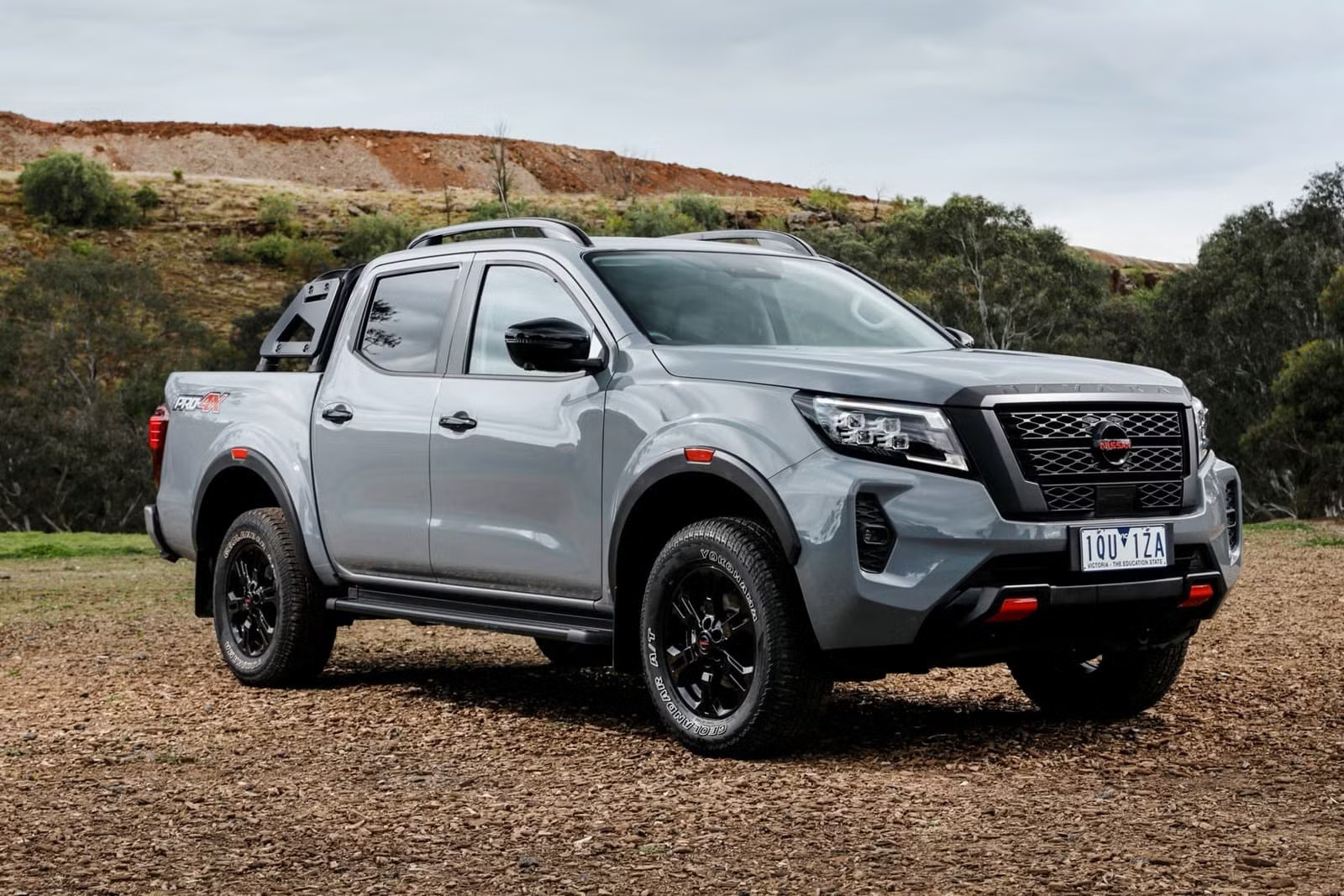
6. Nissan Frontier
The Nissan Frontier has long been a staple in the midsize pickup segment, but despite its rugged history, it struggles to maintain value in the used market relative to its peers.
One of the primary reasons the Frontier sells below KBB value is its outdated platform. While competitors like the Toyota Tacoma and Chevrolet Colorado have undergone significant redesigns and feature upgrades in recent years, the Frontier has lagged behind.
For a long period, Nissan continued selling essentially the same truck with only minor updates, which has left the Frontier feeling dated to many buyers. This stagnation in design and technology negatively impacts resale value because buyers tend to prefer newer, fresher models with more modern amenities.
In addition to its aging design, the Frontier has also been criticized for its underwhelming engine performance and fuel economy, which don’t stack up well against newer rivals. Its V6 engine, while reliable, lacks the power and efficiency that have become standard in competing midsize trucks.
Fuel-conscious buyers and those who want trucks with better towing and payload capabilities tend to overlook the Frontier, contributing to a surplus of used models and weaker demand. When demand drops, sellers must reduce prices, often below KBB values, to attract buyers.
Another significant factor is Nissan’s weaker brand presence in the pickup market. While Nissan has built a solid reputation for cars like the Altima and Rogue, it has never fully captured the loyalty or mindshare in the truck segment compared to Toyota, Ford, or Chevrolet.
Buyers often associate Nissan pickups with bargain-basement value rather than premium quality or durability. This perception drives used prices down because the market anticipates higher depreciation. Even when Frontiers are well-maintained and low-mileage, buyers expect bargains, pushing prices below typical KBB estimates.
Finally, the Frontier’s limited feature set and interior quality hurt its appeal in a segment increasingly dominated by tech-savvy, comfort-conscious buyers. Infotainment systems, safety technology, and cabin materials in the Frontier often fall short of those found in competitors.
Buyers looking for a versatile truck for both work and daily driving may bypass the Frontier in favor of more modern options. This diminishes its desirability, leading to longer market times and increased price reductions, which is why used Frontiers frequently sell below KBB.
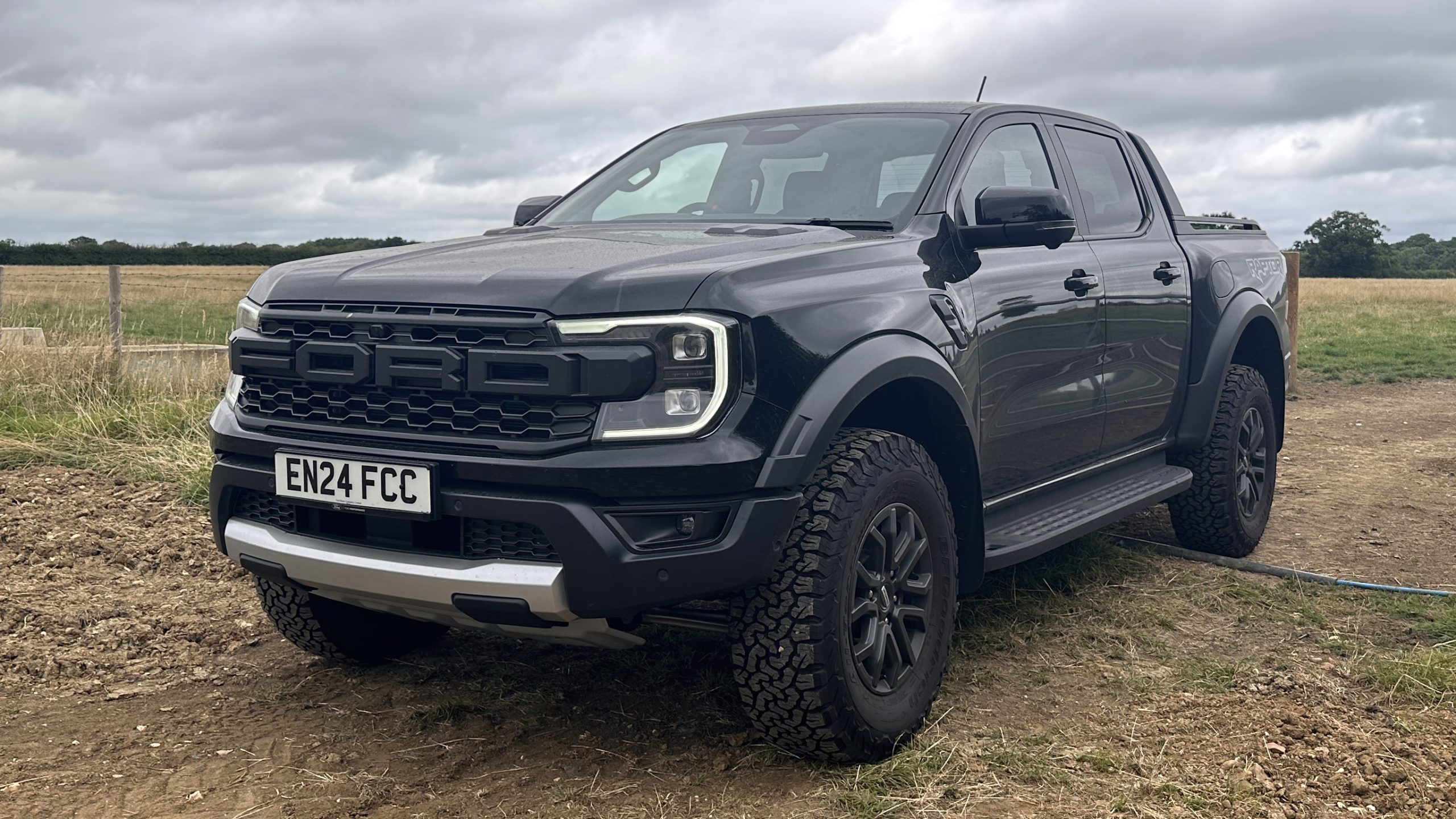
7. Ford Ranger (Earlier Models)
The Ford Ranger made a strong comeback in the midsize pickup segment in recent years, but earlier models, especially those from the early 2010s and before, tend to sell below Kelley Blue Book values. This depreciation trend can be traced to a few key issues that have impacted buyer confidence.
First, many older Rangers suffer from reliability concerns and costly maintenance problems that have been documented in various consumer reports. These reliability issues undermine trust, causing buyers to demand significant discounts on used units.
Additionally, the Ranger’s limited towing capacity and payload relative to other midsize pickups have made it less attractive for buyers who need a work-ready vehicle.
While it is praised for its maneuverability and urban friendliness, buyers seeking robust utility often overlook older Rangers in favor of trucks with more power and towing muscle. The market response is reflected in lower resale values as demand softens.
Another factor is that Ford’s marketing and dealer support for the Ranger during its earlier years were less aggressive compared to its full-size F-150, leading to a smaller, less enthusiastic customer base.
The limited availability of parts and service in some regions further dampened buyer enthusiasm, leading to a more sluggish used market. Even when Ford improved the Ranger’s quality in later models, the earlier trucks were still burdened by lingering perceptions of mediocrity.
Lastly, the rapid evolution of the midsize truck segment means that early Rangers now feel technologically obsolete. Features that were once optional or unavailable—such as advanced infotainment, driver assistance, and connectivity—have become standard expectations.
This technological gap creates a stigma around older Rangers, reducing demand and forcing prices below Kelley Blue Book values. Buyers simply prefer newer trucks that offer more modern conveniences and improved safety.
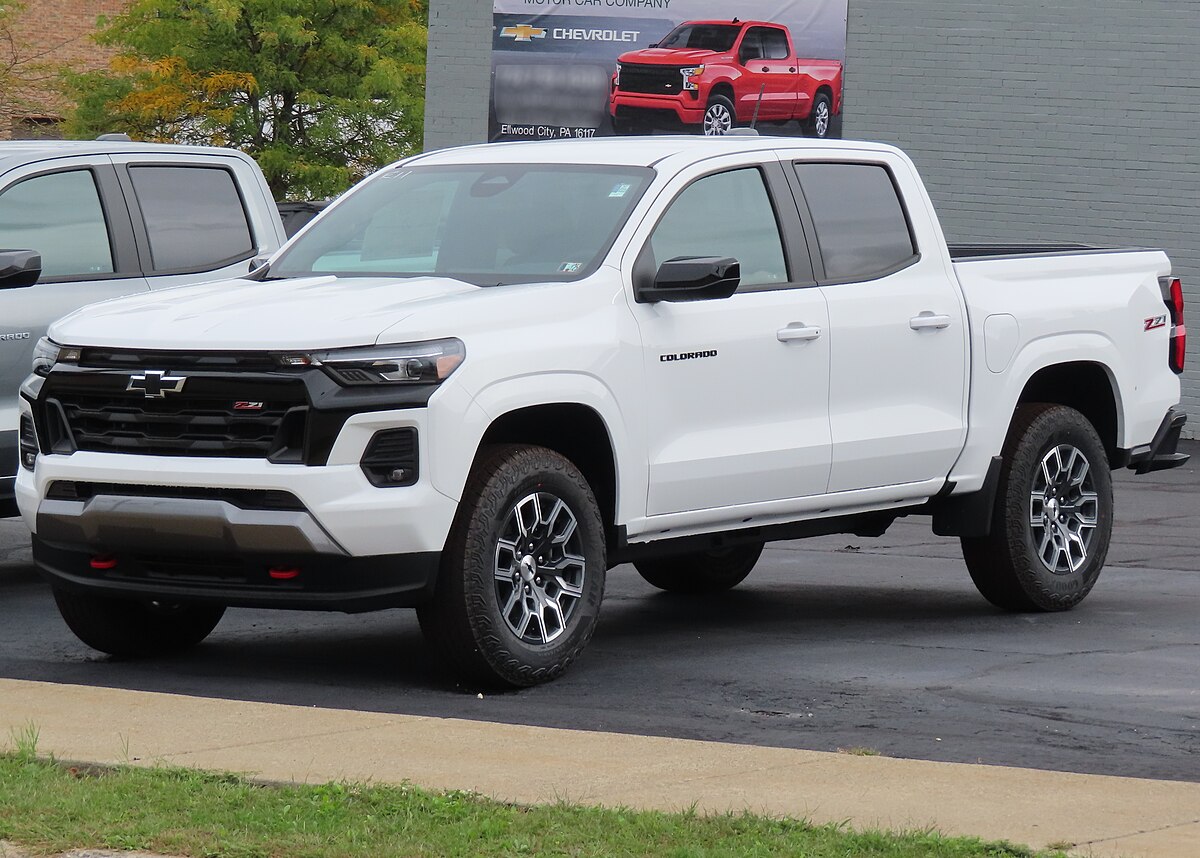
8. Chevrolet Colorado (First Generation)
The first-generation Chevrolet Colorado played a pivotal role in reviving the midsize truck market in the early 2000s, but today, used models from this generation often sell for less than KBB estimates. The primary reason for this is the truck’s dated design and limited feature set compared to modern standards.
Although the first-generation Colorado was praised for its balanced ride and handling at the time, the lack of contemporary safety tech and interior refinements now make it less appealing. Buyers seeking used midsize trucks generally prioritize models with updated infotainment, advanced driver aids, and more comfortable cabins — areas where the early Colorado falls short.
Mechanical concerns also contribute to Colorado’s lower resale values. Some early models were plagued by transmission problems and premature wear issues, which have affected consumer confidence.
Even trucks that have been well-maintained can carry the stigma of these known issues, causing prospective buyers to discount their value. This perceived risk drives prices down below the Kelley Blue Book baseline as sellers compete to find willing buyers.
Another important consideration is that the first-generation Colorado faces fierce competition from newer trucks offering better fuel efficiency, towing capacity, and overall refinement.
The market favors newer models that deliver more bang for the buck in terms of features and performance, leaving the older Colorado behind. As a result, these older trucks often linger on used lots and private sale listings, forcing sellers to lower prices to move inventory.
Lastly, the residual value of first-generation Colorados is further depressed by shifting consumer preferences. The midsize truck market has evolved to favor more lifestyle-oriented trucks with off-road capability and modern tech—niches that the first-generation Colorado did not fully embrace.
This has pushed many of these trucks into the “budget” or secondary market category, where price competition drives values below KBB estimates.
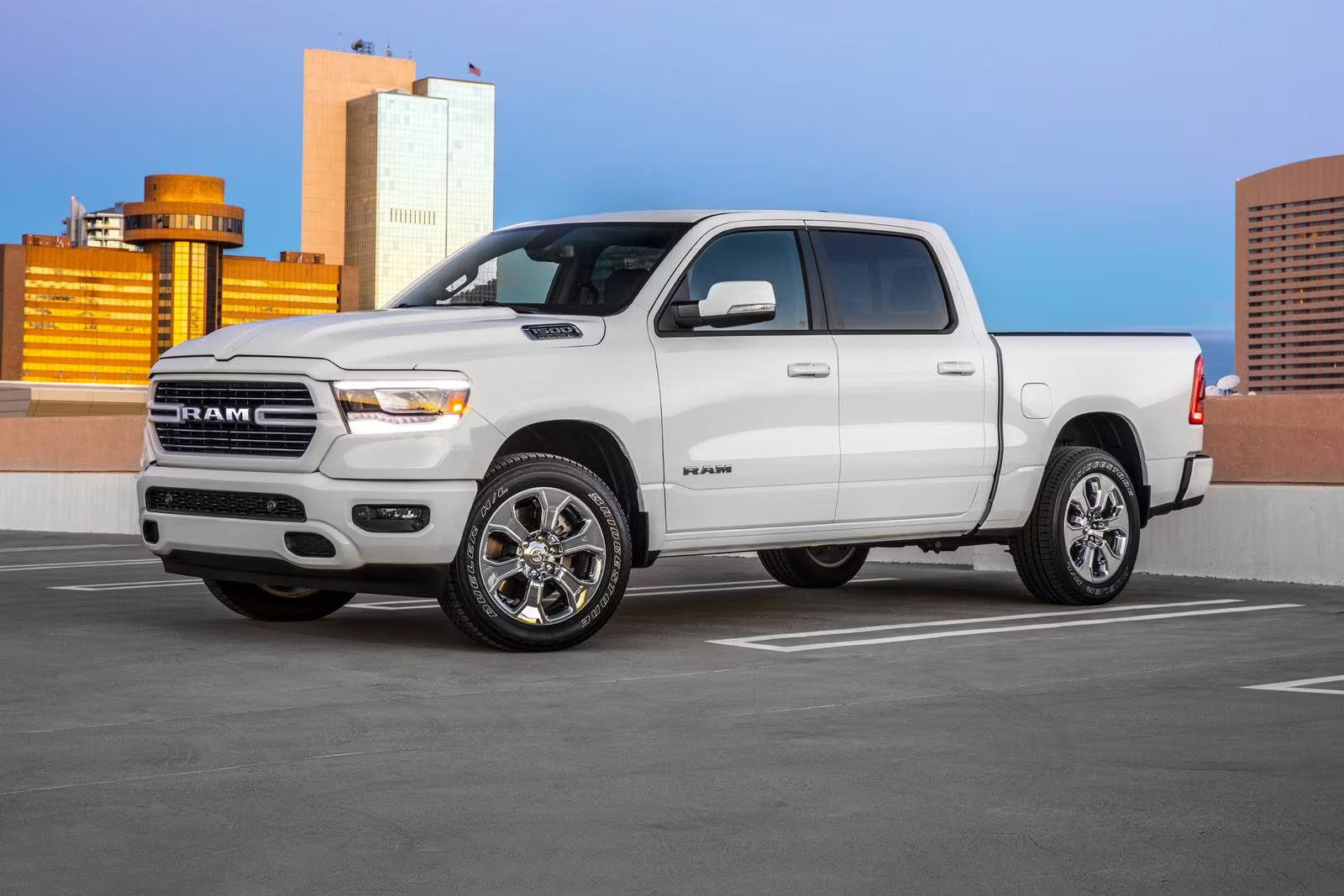
9. Ram 1500 Classic
The Ram 1500 Classic is essentially the previous generation Ram 1500 that was kept in production alongside the newer, redesigned model to offer a more affordable option.
While this strategy helped Ram capture buyers on a budget, it inadvertently impacted the resale values of the Classic models. The older design and less advanced technology of the Classic trim make it less desirable on the used market, causing many of these trucks to sell below Kelley Blue Book estimates.
One of the biggest challenges for the Ram 1500 Classic is its dated interior and lack of modern safety features. While the newer Ram 1500 offers an upscale cabin with state-of-the-art infotainment and driver assistance technologies, the Classic often lacks these amenities or features of outdated versions.
Buyers looking for used trucks want technology and comfort, and the Classic’s limitations in these areas hurt its appeal.
Moreover, the Ram 1500 Classic shares the same mechanical components as the previous generation, which, while generally reliable, don’t measure up to the newer generation’s improvements in fuel efficiency, powertrain refinement, and overall ride quality. This technical gap causes buyers to favor newer models even if it means paying more upfront, driving prices of Classics downward.
Finally, the prolonged availability of the Ram 1500 Classic created a degree of market saturation. Because many dealers stocked these trucks to offer a budget-friendly full-size pickup, the used market supply increased.
When supply outpaces demand, prices naturally decline. Coupled with the truck’s aging design and feature set, this has led to a persistent undervaluing of the Ram 1500 Classic relative to KBB estimates.
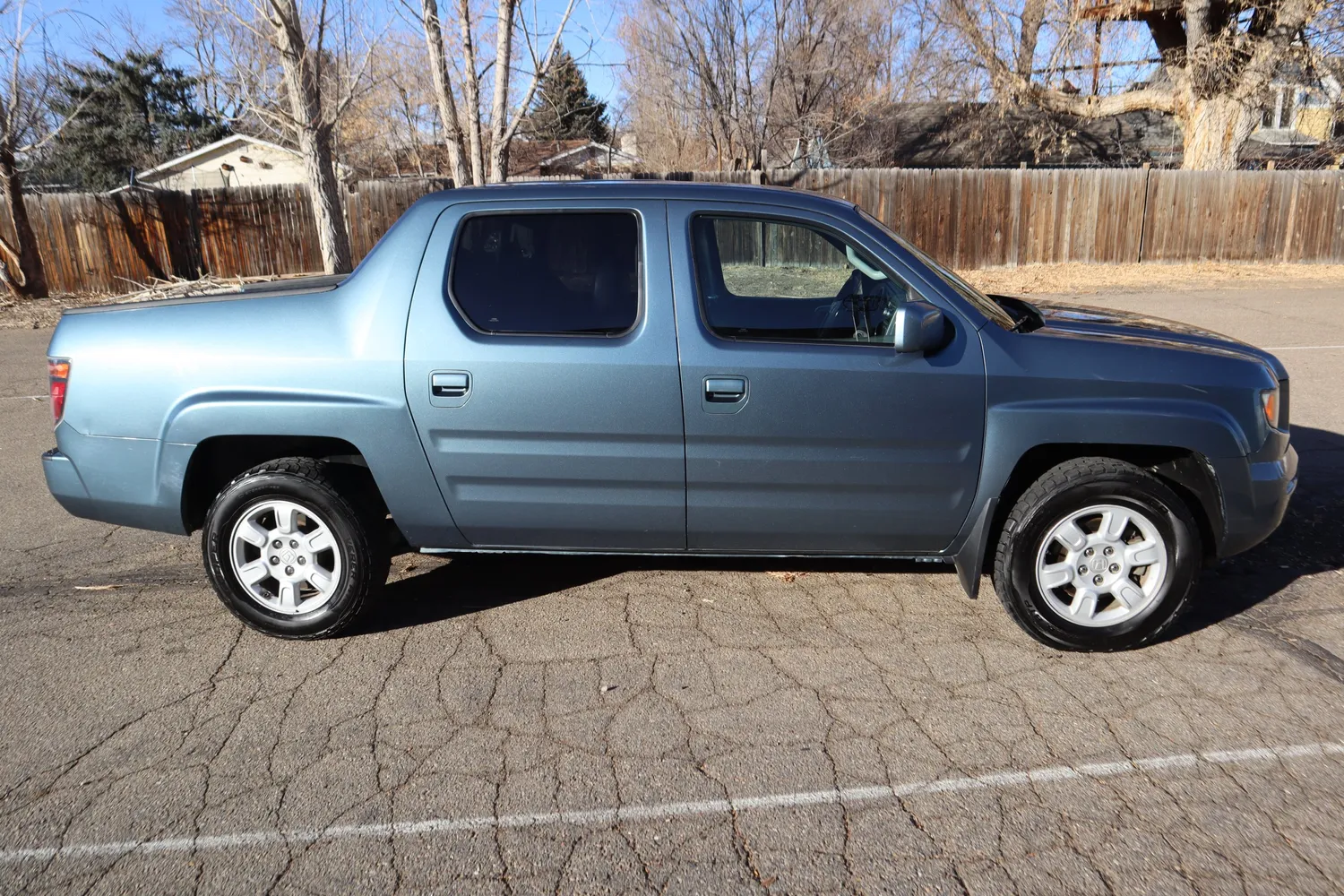
10. Honda Ridgeline (First Generation)
The first-generation Honda Ridgeline is a unique entry in the pickup market, known for its unibody construction and car-like driving dynamics. While these attributes make it comfortable and practical for many buyers, the Ridgeline struggles to hold value compared to traditional body-on-frame pickups, often selling below Kelley Blue Book value.
One of the key reasons for this is its perceived lack of ruggedness. Traditional truck buyers value durability and off-road capability, areas where the Ridgeline’s unibody design and limited aftermarket support are viewed as disadvantages.
Additionally, the first-generation Ridgeline’s design and features have aged noticeably compared to competitors. While its interior quality was praised in its day, today’s buyers expect more advanced infotainment, driver assistance, and towing technologies that the early Ridgeline lacks. This technological gap reduces its desirability on the used market, pushing prices lower.
Another factor is the Ridgeline’s niche appeal. It is more of a lifestyle truck than a workhorse, which narrows its buyer pool. This smaller audience leads to longer market times for used models, compelling sellers to lower prices to facilitate a sale. Compared to the broader appeal of trucks like the Tacoma or F-150, the Ridgeline’s specialized nature limits its resale strength.
Finally, the early Ridgeline’s mechanical reputation, while generally reliable, has been overshadowed by the rise of more versatile midsize trucks that offer better towing, payload, and off-road capability. This makes the first-generation Ridgeline less competitive in today’s market, and its resale values reflect that by trending below Kelley Blue Book benchmarks.
Also Read: 5 Base Trims That Sell Better Than Top Trims And 5 That Don’t
The resale market for pickup trucks is a fascinating arena where various factors collide to shape how much value a vehicle holds once it leaves the showroom. From the exceptional loyalty inspired by the Toyota Tacoma to the niche performance appeal of the Ford F-150 Raptor, it’s clear that some pickups transcend the typical depreciation curve and retain prices near or even above their original MSRP in the used market.
These trucks offer a blend of reliability, capability, and emotional appeal that keeps demand strong, even years after their initial sale. For many buyers, the perceived value in these vehicles justifies paying a premium on the used market — a testament to the strength of their design and brand positioning.
Conversely, the other side of the spectrum reveals pickups that, despite their usefulness, tend to underperform in the resale value game, often selling below Kelley Blue Book estimates. Aging platforms, outdated technology, weaker brand prestige, and market saturation all play roles in diminishing demand and driving prices down.
Trucks like the Nissan Frontier and early Ford Ranger models serve as cautionary examples of how failing to innovate or resonate with buyer expectations can impact value retention, regardless of mechanical soundness. Even reliable trucks can become victims of shifting consumer preferences, highlighting how resale value is as much about perception as it is about function.
This disparity underscores a critical lesson for buyers and sellers alike: resale value is not a static measure but a dynamic reflection of many interconnected variables.
It reminds sellers that maintaining condition, understanding market demand, and timing sales are essential to maximizing return. For buyers, it highlights the importance of looking beyond price tags and considering long-term value, reliability, and desirability.
Moreover, the pickup truck market’s ongoing evolution — driven by new technologies, electrification, and changing lifestyles — will continue to reshape these value trends.
Trucks that adapt to these shifts by integrating modern tech, improving efficiency, and responding to buyer desires will likely hold value better in the future. Conversely, those that fail to evolve may face deeper depreciation challenges.
For prospective truck buyers, understanding which models hold their value and which don’t can inform smarter purchasing decisions.
For instance, paying a premium for a used Toyota Tacoma or a Ford Raptor may be justified by lower depreciation and strong demand, while opting for a Nissan Frontier might come with more significant price drops but potentially better upfront bargains. Each approach carries trade-offs, and knowing these nuances empowers buyers to choose based on their priorities.
In summary, pickup truck resale value is a multifaceted phenomenon shaped by design, performance, brand strength, market dynamics, and consumer perception. By recognizing these factors, consumers can better navigate the used pickup market, whether aiming for a vehicle that holds its value or one that offers the best deal despite steeper depreciation.
As the market continues to evolve, staying informed and attentive to these trends will remain key to making wise automotive investments, proving once again that in the pickup world, value is much more than just numbers on a sticker.

